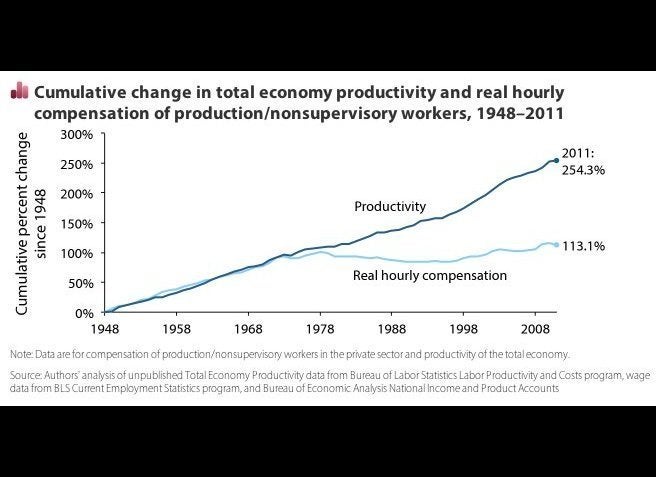Americans have grown up with fears of inflation -- commonly defined as rising prices. But despite the Federal Reserve's oft-stated concern with inflation, we haven't seen much of it in recent years. In fact, the current concern is quite the opposite: deflation.
What is deflation, how does it affect each of us, and what should you -- and the government -- be doing in case it becomes a reality? Here are five things to know about deflation:
1.Deflation is most often identified as falling prices. Deflation is not the same as falling inflation; instead it is an outright price decline as measured by the Consumer Price Index, or the Producer Price Index of industrial products.
U.S. consumer prices took their biggest drop in nearly a decade in December, falling 0.4 percent. For the 2014 year, the CPI was up 0.8 percent. Similarly, producer prices have fallen in four of the past five months, with a steep 0.3 percent decline in December. But for the past 12 months, the PPI is still up 1.2 percent. In the Eurozone, consumer prices are already in negative territory, reflecting deflation.
2.Deflation is typically accompanied by slowing economic growth. If people and businesses start anticipating future lower prices, then they hold off on buying things or spending to expand their businesses.
3.Deflation is self-reinforcing. As prices come down and the economy slows, business becomes less profitable -- often laying off workers. Those unemployed workers don't have a choice. They have little money to spend, so the economy slows even further.
4.Simply "printing" money is not an automatic cure for deflation. Japan has been trying to cure its deflationary economy for more than a decade, most recently by aggressively having its central bank buy Japanese government bonds with newly created money. But once the deflation mentality sets in, it is hard to overcome.
5.The two worst things that could happen in a deflationary economy are tax increases and/or interest rate increases, each of which acts to slow the economy further. Yet suddenly we are hearing talk of both -- a tax increase proposal from the president, and plans for interest rate increases from the Fed. Japan learned that lesson the hard way.
For consumers, a deflationary economy means hard times for many. Deflation makes debts harder to repay, slows job creation and wage increases, and generally lowers our standard of living. Yes, those with cash can buy bargains, including cheaper gasoline. But in the longer run, that will be small comfort for most consumers if deflation takes hold. And that's The Savage Truth.
